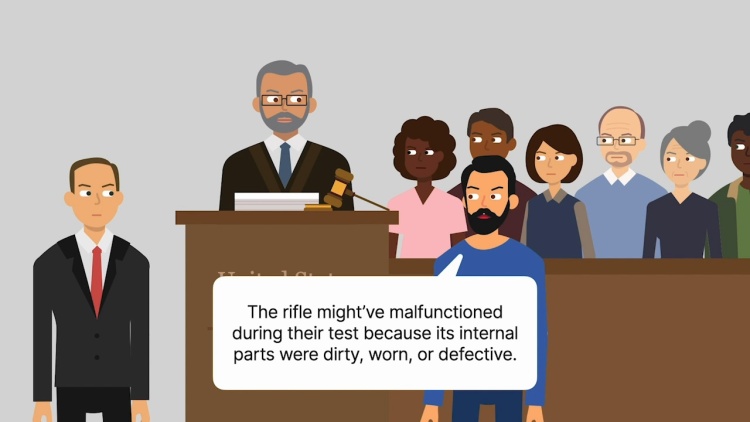United States v. Hitt
United States Court of Appeals for the Ninth Circuit
981 F.2d 422 (1992)
- Written by Haley Gintis, JD
Facts
Dale Lee Hitt (defendant) was convicted for possessing an unregistered machine gun. Section 5845(b) of Title 26 U.S.C. defines a machine gun as any weapon capable of discharging multiple shots per trigger pull. The government (plaintiff) alleged that Hitt modified a semiautomatic rifle to rapid-fire. Hitt disputed that the rifle could discharge multiple shots per trigger pull and hired an expert who tested the gun and confirmed that it did not have rapid-fire capability. The government hired an expert who performed the same test but found that the gun did have rapid-fire capability. In response, Hitt’s expert suggested that the gun fired multiple times during the government’s test because of a malfunction due to dirty or defective internal parts. During the trial, the government sought to introduce into evidence a photograph of the gun to argue that it was not dirty or defective. Hitt objected to the admission under Fed. R. 403 on the grounds that the photograph would cause unfair prejudice and mislead the jury because the photograph included other guns that belonged to Hitt’s roommate. The district court overruled the objection. The jury returned a verdict for the government. Hitt appealed.
Rule of Law
Issue
Holding and Reasoning (Kozinski, J.)
What to do next…
Here's why 899,000 law students have relied on our case briefs:
- Written by law professors and practitioners, not other law students. 47,000 briefs, keyed to 994 casebooks. Top-notch customer support.
- The right amount of information, includes the facts, issues, rule of law, holding and reasoning, and any concurrences and dissents.
- Access in your classes, works on your mobile and tablet. Massive library of related video lessons and high quality multiple-choice questions.
- Easy to use, uniform format for every case brief. Written in plain English, not in legalese. Our briefs summarize and simplify; they don’t just repeat the court’s language.





